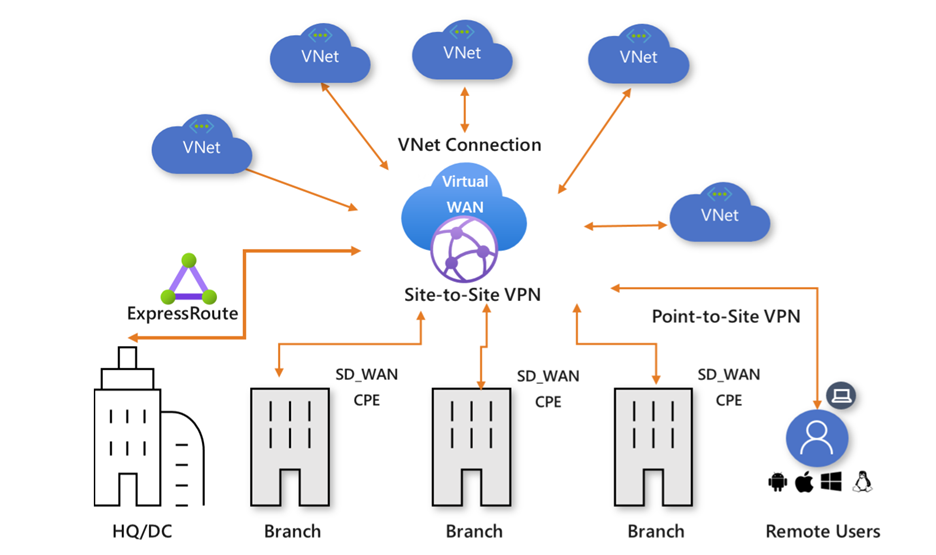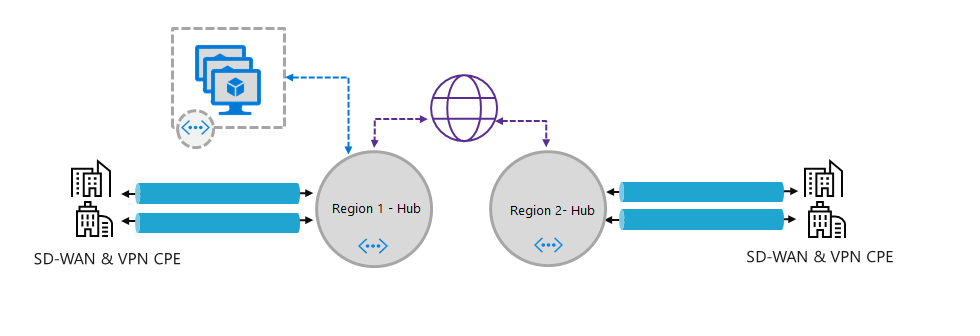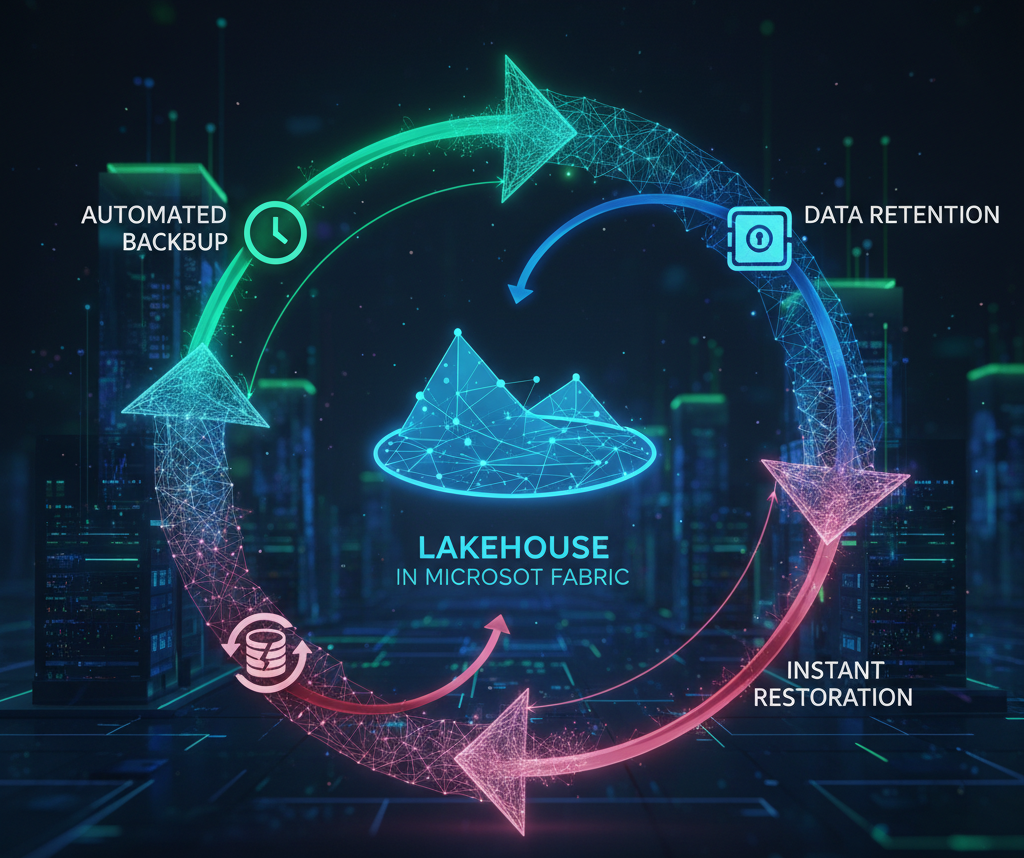The hybrid cloud network consists of both physical and virtualized technologies to provide connectivity across Cloud, private data centers, on-premises, and branch offices. To help customers with their massive modernization efforts, SNP leverages the Azure Virtual WAN to build and deploy applications while simplifying branch connectivity.
Azure Virtual WAN:
Azure’s Virtual WAN is software-defined connectivity that allows you to take advantage of optimized and automated branch connectivity on a global scale with Azure. Virtual WAN provides a better networking experience by seamlessly connecting branches to Azure with SDWAN & VPN devices (i.e., Customer Premises Equipment or CPE) with built-in ease of use and configuration management. It also provides security and routing functionalities to provide a single operational interface.
- Branch connectivity (via connectivity automation from Virtual WAN Partner devices such as SD-WAN or VPN CPE).
- Site-to-site VPN connectivity.
- Remote user VPN connectivity (point-to-site).
- Private connectivity (ExpressRoute).
- Intra-cloud connectivity (transitive connectivity for virtual networks).
- VPN ExpressRoute inter-connectivity.
- Routing, Azure Firewall, and encryption for private connectivity.
How it works:
Traffic from branches goes into Microsoft’s network at the Microsoft edge site which is closest to a given branch office. Currently, there are 130 of these sites in the Microsoft global network. Once traffic is within the network, it can terminate one of your Virtual WAN’s virtual hubs.

Azure’s Virtual WAN offers benefits like:
- Integrated connectivity solutions in hub and spoke: Automate site-to-site configuration and connectivity between on-premises branch office and an Azure hub.
- Automated spoke setup and configuration: Connect virtual networks and workloads to the Azure hub seamlessly.
- Intuitive troubleshooting: Ability to see the end-to-end flow within Azure, and then use this information to take required actions.
- Massive scalability with software-defined connectivity – Connect global branch offices, point-of-sale locations, and sites using Azure and the Microsoft global network.
- Optimize security and agility: Leverage secure transport network services and integrated firewall capabilities to ensure the secure delivery of all applications across your hybrid enterprise. Securely identify and manage the performance of today’s modern and encrypted applications running over SSL, TLS, and HTTPS.
- One place for managing your network: Quickly respond to the needs of your business with application-centric, business intent-based policies that are centrally managed and applied network-wide across all remote locations.
- Reduced costs: Maximize the use of redundancy and lower-cost connectivity options with zero-touch provisioning and centralized management to reduce the cost of deploying and maintaining a hybrid WAN architecture.
- Reliability: Create a highly available WAN architecture that virtualizes and dynamically leverages multiple links at remote locations. Retain end-to-end visibility of network performance and end-user experience for troubleshooting and problem resolution.
- Performance: Deliver superior application performance to your business with the industry-leading WAN optimization solution from SNP.
For more information on Azure Virtual WAN, contact SNP Technologies here.






